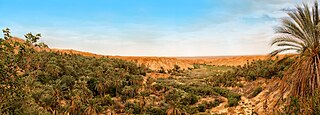Related Research Articles

Laodicea on the Lycus was an ancient city built on the river Lycus (Çürüksu). It was located in the Hellenistic regions of Caria and Lydia, which later became the Roman Province of Phrygia Pacatiana. It is now situated near the modern city of Denizli, Turkey. In 2013 the archaeological site was inscribed in the Tentative List of World Heritage Sites in Turkey.
Şarkikaraağaç is a town and district of Isparta Province in the Mediterranean region of Anatolia. It is the site of Ancient city and bishopric Hadrianopolis in Pisidia, which remains a Latin Catholic titular see.

Selge was an important city in ancient Pisidia and later in Pamphylia, on the southern slope of Mount Taurus, modern Antalya Province, Turkey, at the part where the river Eurymedon River forces its way through the mountains towards the south.
Magydus was a city and bishopric of ancient Pamphylia on the Mediterranean coast of southwestern Asia Minor. It is probably the same as Mygdale (Μυγδάλη) described in the Stadiasmus Maris Magni.
San Giovanni Profiamma is a civil parish in the municipality of Foligno in the province of Perugia, which is also an active bishopric, and is the historical site of the former Roman town and bishopric of Foro Flaminii, which remains a Latin Catholic titular see as Foro Flaminio. It is in the circoscrizione no. 6: San Giovanni Profiamma-Belfiore-Vescia-Capodacqua-Pontecentesimo.
Synaus or Synaos, also spelled Synnaus or Synnaos (Σύνναος), was a city in the Roman province of Phrygia Pacatiana, now Simav, Kütahya Province, Turkey.
Attuda or Attouda was a Hellenistic city in ancient Caria and later in the Roman province of Phrygia Pacatiana. There are coins of the place with the Greek epigraph Ἱερὰ Βουλὴ Ἀττουδέων, of the time of Augustus and later. The coins show that the Men Carus was worshipped there.
Cidyessus or Kidyessos was a city of some importance, west of Ammonia in west-central ancient Phrygia, in the territory of the Setchanli Ova, or Mouse Plain; this large and fertile valley projects far into Phrygia Salutaris, but the city was in Phrygia Pacatiana.
Carura or Karoura was an ancient town of Asia Minor on the north-eastern border of ancient Caria. Its position east of the range of Cadmus assigns it to Phrygia, under which country Strabo describes it. It was on the south side of the Maeander River, 20 miles west of Laodicea to Ephesus. The place is identified by hot springs approximately 12 miles northwest of Denizli, that have been described by the scholars Pococke and Chandler. Strabo observed that Carura contained many inns (πανδοχεῖα), which is explained by the fact of its being on a line of great traffic, by which the wool and other products of the interior were transported to the coast. He added that it has hot springs, some in the Maeander, and some on the banks of the river.

Negrine is a town and commune in Tébessa Province in north-eastern Algeria. It was the site of ancient Casae Nigrae, a settlement of Roman North Africa with an attached bishopric that remains a Latin Catholic titular see.
Choma was a place in the interior of ancient Lycia, according to Pliny on a river Aedesa. Ptolemy places Choma as one of the four cities of the Milyas, and places it near Candyba. The town can be identified with today's village of Hacımusalar in the district of Elmalı.

Sitipa also known as Sitipensis is a titular see of the Roman Catholic Church centered in North Africa.
Peltae (Peltæ) or Peltai was a city and bishopric of ancient Phrygia in Asia Minor, which remains a Catholic titular see.
Zarela, also known as Durzela, Zorzila, Dyrzela, and Zorzela, was a city and bishopric in ancient Pisidia, which remains a Latin Catholic titular see. It site is unlocated.
Tenedos or Bozcaada is an island, former bishopric and Latin Catholic titular see of Asian Turkey in the northeastern part of the Aegean Sea.

The diocese of Tetci is a suppressed and titular see of the Roman Catholic Church. An exact location of the town is now lost to history but it was in today's Tunisia.

Claire Sotinel is a Professor of Ancient History at l'Université de Paris-Est Créteil. She is an expert on Italy in late antiquity, religion, society, and prosopography.
Alia was a town of ancient Phrygia, inhabited in Roman and Byzantine times. It was located in the Roman province of Phrygia Pacatiana, whose capital was Laodicea on the Lycus, and became the seat of a bishop. The names of some of the bishops of Alia are known through their participation in church councils: Caius at the Council of Chalcedon (451), Glaucus at the Second Council of Constantinople (553), Leo at the Second Council of Nicaea (787), and Michael and Georgius, the one a supporter of Patriarch Ignatius of Constantinople, the other a supporter of Photius, at the Council of Constantinople (879).
The Diocese of Castra Severiana is a suppressed and titular See of the Roman Catholic Church.
Luce Pietri is a French historian and scholar of late antiquity.
References
- 1 2 3 Jones, A. H. M. (1998). Cities of the eastern Roman provinces (Special ed. for Sandpiper books Ltd, 1998--t.p. verso ed.). New York: Oxford University Press. p. 72. ISBN 0-585-30785-7. OCLC 45727527.
- ↑ Sylvain Destephen, Prosopographie chrétienne du Bas-Empire 3. Prosopographie du diocèse d'Asie